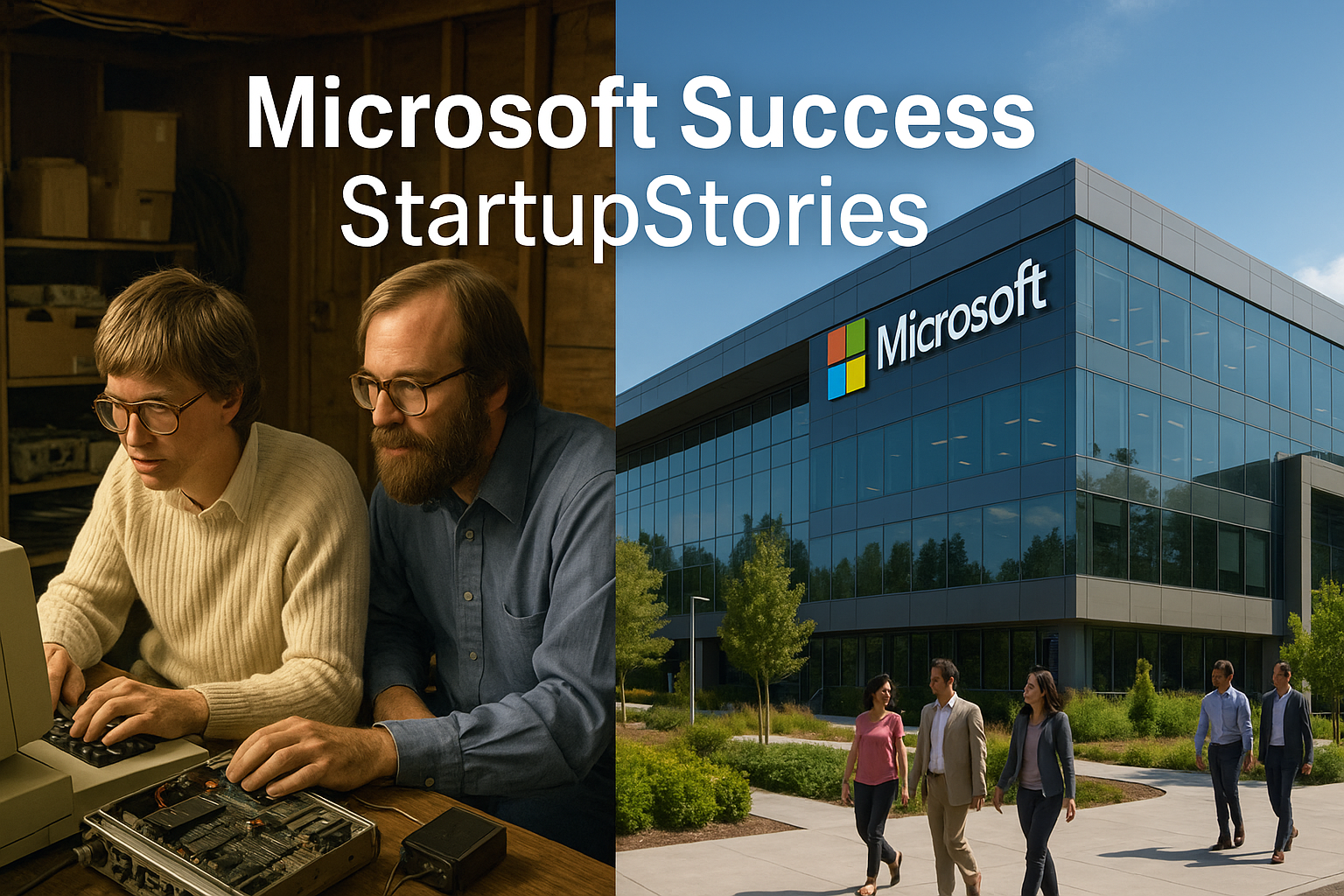Microsoft’s rise from a modest startup to one of the world’s most powerful technology companies is a story of vision, adaptability, and relentless innovation. Co-founded by Bill Gates and Paul Allen, the company shaped the personal computing era and continues to lead in cloud, AI, and enterprise solutions.
The Vision That Started It All
In 1975, two childhood friends—Bill Gates and Paul Allen—launched Microsoft with a vision: to put a computer on every desk and in every home. At the time, this idea was revolutionary, as computers were large, expensive, and limited to labs or corporations.
Their first major breakthrough came with MS-DOS, the operating system developed for IBM’s personal computers. This pivotal partnership with IBM in the early 1980s catapulted Microsoft into the global spotlight and laid the foundation for future dominance.
Game-Changing Innovation: The Windows Revolution
In 1985, Microsoft introduced Windows, a graphical user interface that transformed how users interacted with computers. This innovation made computing more accessible to everyday users and marked a major shift from text-based systems.
Each Windows version brought new features and improvements, helping Microsoft capture the majority of the global PC operating system market.
Strategic Partnerships That Accelerated Growth
Microsoft’s success was significantly fueled by smart partnerships. Their collaboration with IBM opened doors, but what truly scaled the brand was their ability to license Windows to multiple PC manufacturers. This created a massive ecosystem of Windows-based machines across homes, offices, and schools.
They also engaged independent developers to create software for Windows, building a rich library of applications that kept users loyal to the platform.
Prioritizing User Experience
Microsoft’s commitment to user-friendliness has been a key differentiator. Each iteration of Windows aimed to enhance the interface, streamline workflows, and solve user pain points. Whether it was Office, Windows, or their newer cloud services, usability was at the core of their product design philosophy.
This consistent focus helped Microsoft build long-term trust and loyalty among users worldwide.
A Diverse Portfolio Beyond Windows
While Windows was the cornerstone, Microsoft grew into a tech giant through strategic diversification. Notable offerings include:
-
Microsoft Office – Word, Excel, PowerPoint, Outlook: Staples in productivity tools.
-
Azure – A leading cloud computing platform empowering global businesses.
-
Xbox – Revolutionizing gaming with consoles and digital ecosystems.
-
Surface Devices – High-performance laptops and tablets built in-house.
This wide-ranging product suite allowed Microsoft to remain relevant across consumer, enterprise, education, and gaming markets.
Adapting to New Challenges
As tech evolved, Microsoft faced fierce competition—especially from Apple, Google, and Amazon. The company’s attempt to break into mobile via Windows Phone faced setbacks, but it quickly pivoted to focus on cloud computing and enterprise services.
Microsoft Azure, launched in 2010, has since grown into one of the leading cloud platforms globally. This strategic pivot redefined Microsoft’s business model and fueled new revenue streams.
Giving Back: A Culture of Social Responsibility
Microsoft’s story isn’t only about market success—it’s also about making a difference. The Bill & Melinda Gates Foundation, funded by Microsoft’s co-founder, is one of the world’s most impactful philanthropic organizations, addressing global challenges in health, poverty, and education.
Microsoft as a company has also taken strong steps toward sustainability, digital literacy, and corporate responsibility through programs and partnerships worldwide.
Wrapping Up
From building an operating system in a small garage to becoming a leader in cloud computing and AI, Microsoft’s journey exemplifies how vision, innovation, and persistence can build a global legacy.
The company continues to inspire future generations of entrepreneurs and technologists, proving that adaptability and purpose-driven leadership are key to long-term success.
Frequently Asked Questions (FAQs)
Q1. When was Microsoft founded and by whom?
Microsoft was founded in 1975 by Bill Gates and Paul Allen in Albuquerque, New Mexico.
Q2. What was Microsoft’s first big breakthrough?
Their deal with IBM to provide MS-DOS for its first personal computer launched Microsoft into global recognition.
Q3. Why is Windows significant in Microsoft’s success?
Windows offered a user-friendly graphical interface that made personal computing accessible and mainstream.
Q4. What are Microsoft’s key products today?
Microsoft Office, Azure cloud services, Xbox gaming, and Surface devices are some of their leading offerings.
Q5. How has Microsoft impacted society beyond tech?
Through the Bill & Melinda Gates Foundation and corporate initiatives, Microsoft contributes to global health, education, and sustainability.
